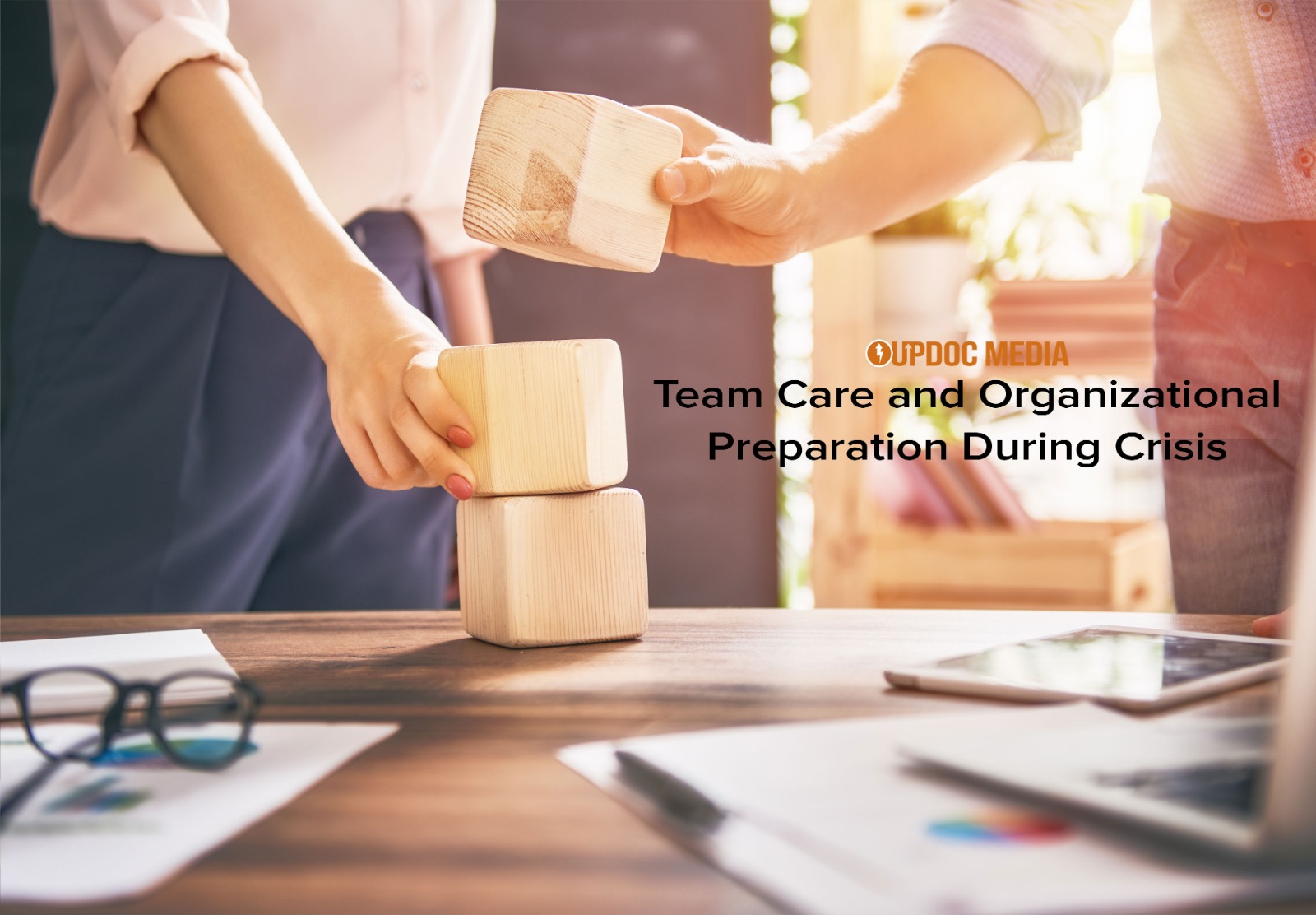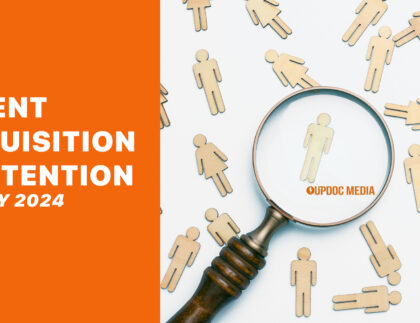
It’s become self evident that 2020 has not gone nearly resembling anything that anyone has hoped or planned. This sentiment exists on all sides: economically, socially, in regards to health, travels, life goals, etc. In a recent webinar hosted by Embodia regarding emergency planning under the context of COVID-19 return to clinic, the ideas and experiences drawing from my past service in critical incident response along with being on the front lines of either volunteer work or clinical evacuations for several firestorms in Southern California — all came to a point of realization that in healthcare, we have a lot of room to grow and mature into our own as it pertains to team care and organizational preparedness during crisis events.
Now, this post isn’t aiming to answer all the questions. Rather, much like the Internal Realities Healthcare Needs To Fix and our Digital Healthcare Best Practices white paper — this post aims to help identify some true north concepts and action steps that can be taken, along with some key questions that need to be asked so that your organization can develop the tools and plans it needs to take care of your team.
But, before we get tooooooo far… Perhaps it’s worth going into a little bit of background.
During my clinical career, I’ve evacuated firestorm danger zones. I’ve mucked around in pitch black, dark basements during rainstorms and floods to clear staff out who might have gotten lost or trapped. From coordinating sudden creation of makeshift drapes due to overheating rooms during a power outage to helping with the triage effort in attendance to a mass pile up with a dozen cars involved in the accident — all with passengers admitted to trauma during an understaffed weekend… I’ve had the opportunity to serve during critical incidents.
And, make no mistake — none of this past experience makes me an expert in any one realm per se. But, it does offer some perspective and mind mapping as to how an organization can effectively respond and take care of its own.
With all that has happened during this first half or so of this year 2020… it’s probably a good idea to examine what we have planned now, so that we have a least a little bit of certainty prepared during uncertain moments.
So, without further ado… this article covers 10 essential components of team care and organizational preparedness — after all, if you aren’t taking care of your team, you can’t stand to hope to preserve your organization.
Ready? Let’s go!
#1: Have A Plan — For When Something Happens
It’s incredible how many “see the manual” plans exist for any set of emergencies or times of crisis. Ironically enough, when the moment occurs, the manual is nowhere to be found. This is about as effective a plan as “see the manual” when you get a flat tire. Unless you actually have a plan, practice that plan, and regularly revisit as well as fine tune said plan — it’s not a plan. It’s a “hope I don’t need to use this one day.”
A plan doesn’t have to map out every possibility. In fact, it’s probably better that you don’t. After all, a plan is great until it doesn’t go according to plan. #2020 #OverItYet?
What a plan DOES need to have is a Who, What, How, and Why. When and Where will happen all on there own. OH, PS. “Who” will be defined further in component #4.
In any case, this leads us to…
#2 Have Another Plan — For When Something Fails
You know the saying, “Best laid plans…” It’s a thing; and, plans are dashed all the time. It’s important to have a contingency plan. A good contingency plan is directly related to the primary response plan.
As an example: While no one had planned for a region wide power outage during a heatwave that would critically overheat patient rooms in a hospital, no one had plans on how to block out the sun during the event. And, why would they? Tasked with the response plan, I had rehab therapists who weren’t sent down to ICU for bagging to help run around the floors and rooms with direct sunlight beating down on patients to put up makeshift blackout shades and curtains with linen.
In retrospect, it was truly alarming how hot the rooms got under direct sunlight due to how large the windows were. Fortunately, we were closing towards the end of the afternoon and were able to help make most rooms comfortable enough with the hospital blankets which were colored dark green — thick enough to block out the light.
#3: Have A Final Plan — For When All Else Fails
Drawing from the example above, if makeshift blackout curtains would’ve failed, we would’ve either moved patients out into the hallway temporarily (if allowed by their isolation precautions) and/or find boarding material to line the windows with.
Oh, just in case the heatwave sunlight situation didn’t sound emergent — rooms were heating up past 90 degrees Fahrenheit in a matter of minutes. It was bad. Families were complaining. Patients panicked.
One can consider the primary response plans as the “ideal circumstance.” The contingency plan can be seen as the “fail safe” — while not ideal, is still a favorable response to the event. The final plan should be interpreted as a “minimally viable intervention” — it’s nowhere near perfect, but it’s better than nothing.
#4: Appoint A Crisis Coordinator
The “WHO!“

A crisis coordinator doesn’t have to be at the higher rungs of any organizational chain of command. Rather, the coordinator is usually best located closer to the frontlines than to middle management. After all, they will be in a position for timely response whereas middle and upper managers will be better positioned to coordinate communications and allocation of resources.
The crisis coordinator should not only be intimately familiar with the response plans, they should also have advanced training in both crisis response as well as critical incident stress management.
For my own career path, I actually got training in stress management before I received training in response planning. What was incredible in this learning experience was how stress can so easily derail an individual’s thought process from objective and logical into flustered and frantic — even professionals who have high pressure, high stakes, complex diagnostic decision making skills which they rely on a day to day basis.
Context matters.
The Crisis Coordinator is exactly that — a coordinator. Their job is to ensure that interventive steps are being made, that the necessary resources are being made available, and most importantly — that the team has the intrinsic energy, morale, and self care tools readily accessible.
#5: Create Clear Channels of Communications
As mentioned in #4, communications should be the key role and responsibility of middle and upper management during an organizational crisis or critical incident.
Let’s be honest: Most middle and upper management teams are customarily a least a little bit removed from the realities of the frontlines. While they may survey the line staff regularly, it is one thing to observe and be aware of — and, it’s an entirely different thing to drudge in the trenches on a daily basis.
Therefore, middle and upper managers are in prime position to communicate between operational teams and their crisis coordinators; and, they are perfectly positioned to serve as conduits of information outside of the organization itself. Middle and upper management personnel are also keenly positioned for both team care and appointing ad hoc key roles during crisis.
#6: Place Talented Individuals In Key Roles
It’s not about experience, credentials, or accolades. In a crisis, it comes down to response time, ingenuity, and grit.
Just as it wasn’t necessarily on me to take up frontline crisis response due to my experience (after all, I was closer to a new grad than anything), or for my non-existent post-graduate credentials… the reason I took action was because no one else knew what to do; and, no one else wanted to take the first steps during a crisis. The fact of the matter was: I raised my hand when no one else would.
During my humble days as a physical therapy aide, I had the experience of evacuating old buildings when things went wrong. This led to me becoming a point of contact and coordination for when our region had a mass power outage. During my college days, I had volunteered during Southern California firestorms. Following in my home health days, I was tasked to help evacuate residents who were at risk or in the path of uncontained fires in another firestorm season.
But, it all started with the building manager asking for volunteers to go into a pitch black, flooded basement — I raised my hand.
Sometimes, the will to act and the instinct to do so is more valuable for team care and crisis management than is anything else.
Oh, one last thing: Don’t be afraid to ask for volunteers 😉
#7: Establish Clear Touchpoints For Self Care
Speaking of team care, the remainder of this post will be dedicated to this very important aspect of crisis management.
Let’s be frank: COVID-19 became a crisis in record time. Clinics weren’t prepared. Emergency departments weren’t prepared. Inpatient facilities weren’t prepared. NO ONE WAS — at least, not to the extent of which we hoped to be — all because this was a once in a lifetime event.
The stress and uncertainty of a crisis is hard to describe. Even as we are living through it in 2020, it’s still pretty baffling to sufficiently put into words.
Because of this, it is vital to any organization to have set touchpoints for staff members to engage in self care. AND, it is also during this time that crisis coordinators need to synchronize their efforts with middle and upper management to ensure that team care is being implemented.
Team care and self care is but a difference of scale. It starts with awareness.
- Am I physically exhausted?
- Is my department physically exhausted?
- Am I stressed out of my mind and running on pure adrenaline?
- Is my department stressed out and running in fumes?
- Is my team fed? Is my team rested… or at least, rested well enough?
- Am I properly protected against the immediate risks?
- Does my team have the equipment and resources to keep themselves safe and continue with their work without unreasonable attrition?
- How in tune are middle and upper management teams to the realities of the front lines?
- What level of clarity and/or transparency is middle and upper management allowed to share with those deep in the trenches?
- Do I need a break?
- Does my team need an extra hour off today?
- Do I need to talk with someone?
- Does my department need to debrief over the happenings of this week?
These are just some examples of touchpoints that need to be set, checked, and routinely made.
PLEASE BE CLEAR: Team Care IS the foundation of Organizational Preparation. If your team is in tatters, your organization will be scraping by to serve its clientele… not to mention, poorly conditioned to persevere through the storm.
#8: Set A Cultural Tone of Openness
Far too often, organizations which hold professionalism to a high esteem (and, rightfully so) make the mistake of becoming “more professional than thou” — a la the adage “holier than thou.”
“You’re a professional, aren’t you?!” — it becomes a problem as it inadvertently discourages the organization’s workforce from self care, and thus, TEAM CARE.
“Too weak. Too tired. Not professional enough…” These become taboo. Sadly, during a time when being a decent person might be a little bit more important than being perceptively a decent professional… the mark is sorely missed and will sabotage your team’s ability to care for itself, and, for coordinators as well as managers at all levels to attend to their teams.
THEREFORE, a culture of openness MUST be fostered.
Openness doesn’t mean “no decorum” — it means that honest conversations can happen in the right context, and, in the appropriate environments. It means that team members need to feel that criticism, concern, suggestions, questions, and requests are all WARMLY WELCOME by management. And, certainly… just because they are welcome, doesn’t mean they will be fulfilled; nevertheless, they will be heard, appreciated, considered… and, a final decision transparently shared. THAT, is openness.
When the workforce fears airing out thoughts with management; when they feel ignored and unheard; when teams feel that “it’s us versus them, management” — things have truly gone wrong and your organizational tone is approaching one of closed communication… or, none at all 😞.
#9: Reward And Recognize Excellence
You’d surprised how far public praise and respect for contributions can go. It doesn’t always have to come in the form of bonuses, raises, or promotions. Maybe, it’s just a public nod that a key individual or a strong team made a real difference. The value in equitable reward and recognition is workforce engagement. After all, there are six primary dimensions of employee compensation.
Salary and/or cash payout is but one of them. The “intangible” dimensions, shown to be far more important when it comes to talent retention, include: Workplace Culture, Workplace Opportunity, and Work-Life Balance.
When a manager or person in leadership publicly recognizes (which, sometimes is the reward, in and of itself) a person who has contributed above and beyond — that’s a moment that elevates Culture; it helps the individual see the Balance in their work and life in general; and, it also gives the sense that there is room to grow into and upward within any given organization.
Of course, there is a reality of career life cycles and stages within any given company. Nevertheless, a team feels cared for if you address them in the now as much as you give them certainty (within reason) for the future.
Ultimately, this aspect of team care is simple: Give credit to where credit is due.
PS. I’m putting on blast: Insecure management who are notorious for burning out talented individuals they explicitly or implicitly feel exist as a threat — whether a threat to their immediate position, or, as a threat to expose the fact that they could be doing a better job in said position.
This occurs commonly in one of two ways: (A) taking credit for someone else’s excellence or ideas — typically after that manager has forced out or burnt out that individual up to or until they leave… reviving that idea for themselves; or (B), refusing a well deserved rank promotion or moment of public recognition in fear of “upsetting the pecking order” established by workplace “allies” who have set for themselves a cushy job based on trumping experience and/or tenure — making for a culture of mediocrity by default. #Boom #SaidIt
#10: Keep Your Promises
During a crisis event, organizations are going to ask of their staff and teams more than they well have ever before. Organizational leaders tend to make promises or issue assurances — that “we do this now, so that we can have a later…” — AND, it is absolutely critical to keep those promises.
It cannot be stressed enough what happens during every crisis:
- Leaders emerge; raised, promoted, or not — they emerge.
- The promise of short term sacrifice for long term survival is made — but, is it kept?
- Obvious incompetence is exposed — but, is it dealt with?
- Entire organizations hinge on commitments — but, will they endure?
The bottom line here, in terms of team care, is the validation of trust.
“You talk the talk, but do you walk the walk?
Organizations have toppled for things less than “breach of trust.”
Nothing can be more destructive or toxic than when promises are made and blatantly dismissed — even when conditions and circumstances change, and reasonably so… responsible organizations and strong leaders will at the very least acknowledge that promises were made, and own the fact that the organization cannot deliver… or at least, not yet. If this trust is breached, your team will not sustain the aftermath of the crisis… you will have turnover, burnout, fallout, and potentially — whistleblowing. Be cautious. Be responsible. Do the right thing.
Organizational Behaviors, Team Excellence, and Human Capital
These are the big three when it comes to Corporate Culture Change. Cultural direction comes from the top; and, is built by the raised leaders who serve at the front. If you wish for your organization to be prepared for crisis and for your team to be well cared for during trying times — it all begins here… not that the process is more important than the people — not that the people are more important than the process — RATHER, that in times of crisis, your people IS the heart your process and your organization’s priority.










